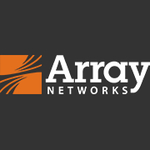List of Best Load Balancing Software
Showing 10 of 16 productsOpenText LoadRunner is a and versatile software designed to help businesses effectively test and monitor the performance of their applications under various workloads. With its advanced features and user-friendly interface, LoadRunner simplifies the...Read OpenText LoadRunner Reviews
Traefik Enterprise the efficient and user-friendly solution for managing and balancing web traffic. Designed for modern applications and environments, Traefik Enterprise offers advanced features and seamless integration for a seamless performance, ma...Read Traefik Enterprise Reviews
NGINX Plus is a solution for your web serving needs. With its powerful features capabilities, NGINX Plus delivers lightning-fast performance, secure delivery of your applications, and easy scalability. Say goodbye to slow page load times and hello to...Read NGINX Plus Reviews
HAProxy Enterprise is a solution for high availability, load balancing, and proxying needs. With its advanced features, robust performance, and exceptional reliability, HAProxy Enterprise is the go-to choice for businesses seeking seamless delivery o...Read HAProxy Enterprise Reviews
Barracuda is a software that is revolutionizing the way businesses secure their data and networks. With its advanced technology and user-friendly interface, Barracuda is setting a new standard in the world of cybersecurity. This highly acclaimed soft...Read Barracuda Reviews
TSplus is a and innovative software solution designed to enhance your remote desktop experience. With a user-friendly interface features, TSplus allows you to access your applications and files from any device, anywhere. Say goodbye to complicated se...Read TSplus Reviews
Array ADCLoad Balancers - your solution for optimal load distribution and performance optimization. Designed for efficient handling of incoming traffic, our load balancers offer a seamless and secure experience for your website or application. With A...Read Array ADCLoad Balancers Reviews
Pound is a software designed to streamline your financial management experience. With its user-friendly interface features, Pound makes it easy to stay on top of your finances, track expenses, and make informed financial decisions. Join the hundreds...Read Pound Reviews
Alteon VA is a solution for seamless virtual application delivery. With its advanced features and unmatched performance, Alteon VA revolutionizes the way organizations manage and deploy their applications. Say goodbye to complex network configuration...Read Alteon VA Reviews
Avi Vantage a revolutionary software designed to enhance and optimize your web application delivery. With its advanced load balancing and application delivery features, Avi Vantage provides seamless is a performance for your web applications. Get rea...Read Avi Vantage Reviews
- What Is Load Balancing Software?
- Top Reasons Why Businesses Need Load Balancing Software?
- What Are the Top Key Features of Load Balancing Software?
- What Are the Top Benefits of Load Balancing Software?
- What Are the Steps to Choose the Right Load Balancing Software?
- What Are the Types of Load Balancing Software for Different Industries?
- What Are the Technology Trends for Best Load Balancing Software?
- What Are the Deployment Options for Load Balancing Software?
What Is Load Balancing Software?
Load balancing software is a critical component of distributed computing systems, facilitating the equitable distribution of workloads and resources among multiple computers, typically interconnected by networks. The system operates by actively monitoring incoming requests, such as those pertaining to website access, and subsequently distributing them over multiple servers capable of effectively managing these demands.
This facilitates enhanced performance, scalability, and dependability. Load balancing software plays a crucial role in mitigating disruptions by effectively allocating requests to servers with sufficient capacity.
Moreover, the best load balancer software technology can be employed to efficiently direct requests across diverse networks, enabling administrators to conveniently access services from distinct subnets, without the need to construct a novel network infrastructure. Typically, load balancer software operates by receiving an incoming request and directing it to the server that is most suitable for its processing.
This task can be accomplished by employing specific criteria, such as the availability of servers, or by utilizing algorithms that aim to enhance performance. The objective is to efficiently direct user requests to the server that possesses the optimal capacity to process them, hence ensuring the provision of high-quality service to users.
Top Reasons Why Businesses Need Load Balancing Software?
1. Redundancy: Load balancing software plays a crucial role in enhancing server performance by effectively dividing the burden among different servers.
2. Fault tolerance: Load balancing is a technique that can effectively distribute the workload uniformly among numerous servers. In the event of a server failure, the remaining servers are capable of effectively managing the workload.
3. Improved scalability: In situations where there is a need to augment traffic, the distribution of workload can be automated, thereby obviating the necessity for manual intervention, by transferring it from one server to another.
4. Improved availability: Load balancing software plays a crucial role in preserving a consistent degree of availability, particularly in the face of heavy traffic occurrences, thereby guaranteeing uninterrupted operation.
5. Enhanced utilization of resources: The implementation of load balancing techniques can enhance resource utilization efficiency, hence mitigating the risks of server overloads and idle periods.
6. Better performance: The implementation of load balancing techniques can effectively optimize server performance by evenly dispersing the workload across multiple servers, hence preventing any individual server from becoming overwhelmed.
7. Improved security: Load balancing serves as a protective measure against malicious assaults by imposing restrictions on server accessibility and distributing the associated risks across multiple servers.
8. Greater resource allocation: The best load balancer software is a technique employed to effectively manage the utilization of resources in applications and systems. It involves the allocation of resources to nodes that demonstrate the highest level of efficiency in their usage.
9. More efficient user experience: Load balancing software plays a crucial role in facilitating the expeditious and efficient delivery of online services to a diverse range of users.
10. Improved resource optimization: The best load balancing software is a technique that aims to enhance operational efficiency and resource utilization by continuously assessing and adapting the allocation of workloads.
11. Cost savings: The best load balancer software has the potential to generate cost savings in terms of hardware and labor expenses by minimizing downtime and thus reducing maintenance expenditures.
12. Support for different protocols: The implementation of load balancing techniques facilitates the efficient and dependable distribution of workloads across diverse network infrastructures, encompassing HTTP, HTTPS, and FTP protocols.
13. Dynamic resource allocation: The process of the best load balancer software involves dynamically adjusting the allocation of resources in order to optimize their use in real-time.
14. Increase in system throughput: The utilization of load balancer software has the potential to significantly enhance system throughput by effectively distributing the workload over numerous nodes.
15. Support for hybrid environments: Load balancing software has the capability to be employed in diverse configurations, both in cloud-based and on-premises settings, thereby facilitating enterprises to effectively expand their operations in hybrid environments.
What Are the Top Key Features of Load Balancing Software?
The top key features of load balancing software include:
1. Automatic Load Balancing: The process of automatically distributing incoming traffic over many servers is implemented to maintain consistent resource utilization and optimize performance.
2. High Availability: The utilization of a group of servers is employed to reduce periods of inactivity, hence enhancing the accessibility of applications and ensuring uninterrupted business operations.
3. Fault Tolerance: During instances of service disruption or interruption, load balancers autonomously redirect traffic to the remaining nodes in order to uphold system availability.
4. Scalability: The best load balancing software are specifically engineered to dynamically adjust the quantity of targets for network traffic in response to changing demands.
5. SSL Offload: The process of improving performance involves transferring the responsibility of SSL encryption/decryption handling from back-end web or application servers.
6. Compression: The process of compressing incoming and outgoing traffic is employed to optimize the overall data transfer rate.
7. Content Routing: The utilization of layer-7 content switching rules facilitates the routing of network traffic by considering specific content, type, or application, thereby directing it to the server that is most suitable for handling such traffic.
8. Health Checking: Regularly monitors the status of every target to ensure precise routing of traffic to accessible back-end resources.
9. Application Routing: Load balancer software offers application layer routing capabilities, encompassing layer-7 switching for protocols such as HTTP/HTTPS, FTP, SMTP, UDP, and various more.
10. Caching: Enhances operational efficiency through the implementation of static content caching, resulting in reduced latency and increased overall performance.
What Are the Top Benefits of Load Balancing Software?
1. Improved scalability: Load balancing software plays a crucial role in enhancing scalability by effectively dividing incoming traffic among numerous web servers. This facilitates a heightened utilization of resources and contributes to the application's ability to effectively manage unexpected surges in incoming traffic.
2. Improved reliability: The best load balancing software play a crucial role in monitoring the health of applications and servers. They effectively shift traffic away from servers that are experiencing downtime caused by system failure, resource overload, or other related issues.
3. Improved security: Load balancers play a crucial role in safeguarding against security vulnerabilities, particularly distributed denial of service (DDoS) assaults. This is achieved by effectively dividing network traffic across numerous servers, so diverting any harmful activity away from the back-end servers.
4. Improved response times: Load balancers play a crucial role in enhancing total response times by effectively spreading traffic among numerous resources, hence facilitating prompt handling of requests.
5. Improved cost-efficiency: The best load balancing software play a crucial role in optimizing resource utilization and cost reduction by obviating the necessity for dedicated failover mechanisms.
What Are the Steps to Choose the Right Load Balancing Software?
1. Determine Requirements - Prior to choosing a load balancing software, it is imperative to assess both your present and prospective requirements. Conduct an analysis of the existing network and applications, and afterwards project the anticipated growth rate for those applications. The selection of appropriate load balancing software is influenced by several factors, including the determination of server quantity, user base size, peak traffic periods, and any unique application performance needs.
2. Analyze Software Features - After gaining a comprehensive understanding of the specific requirements, one can proceed to conduct an analysis and comparison of various loadbalancer software solutions in order to ascertain the most suitable option that aligns with the identified criteria. When evaluating a system, it is important to take into account many elements, including scalability, platform compatibility, security, and monitoring capabilities.
3. Establish Performance Standards - Prior to acquiring and implementing any load balancing software, it is imperative to define performance benchmarks that the software must adhere to. The aforementioned benchmarks encompass reaction time, traffic flow, uptime, and latency.
4. Test the Software - After the selection process has been refined to a limited number of options, it is necessary to proceed with the evaluation of each alternative. Conduct experiments to simulate both dummy and live traffic, and thereafter evaluate the performance of the system in accordance with predetermined benchmarks. Ensure that the outcomes are documented in order to facilitate a comprehensive and equitable comparison of the options.
5. Choose the Right Load Balancing Software - Upon conducting tests and assessing the obtained findings, it is recommended to choose the load balancing software that most effectively fulfills your requirements while staying within the allocated budget. It is advisable to do deployment and testing in a controlled laboratory setting prior to applying the solution in a production environment.
What Are the Types of Load Balancing Software for Different Industries?
Load balancing software is employed to effectively regulate traffic inside a system, with the aim of achieving optimal efficiency by evenly distributing workloads. Various industries may employ diverse varieties of loadbalancer software, contingent upon their specific requirements.
The common types of load balancing software used in different industries include:
1. Application Delivery Controllers – Application Delivery Controllers (ADCs) are employed for the purpose of effectively managing application traffic, with the objective of optimizing server response times and ensuring equitable distribution of workloads. These tools have the capability to effectively handle web, mobile, and cloud-based applications, while also offering enhanced functionalities such as application security and acceleration.
2. Network Load Balancers – Network Load Balancers (NLB) are employed for the purpose of evenly distributing network traffic across a multitude of servers. Load balancers are utilized to achieve equitable distribution of network traffic across multiple servers, hence enhancing overall system performance.
3. DNS Load Balancers – DNS Load Balancers (DNSLB) are employed to achieve equitable distribution of DNS requests among numerous server locations. Additionally, they have the capability to redirect queries through an alternative Domain Name System (DNS) in the event that the primary DNS is inaccessible.
4. Hardware Load Balancers – Hardware Load Balancers (HWLBs) are dedicated hardware devices employed for the purpose of efficiently distributing workloads inside a system. The purpose of their design is to achieve an equitable distribution of requests among servers, hence optimizing the system's performance.
5. Cloud Load Balancers – Cloud Load Balancers (CLB) have been specifically developed to enhance the efficiency of cloud-based systems. A variety of capabilities are offered, such as global traffic optimization and auto-scaling, in order to properly manage workloads.
What Are the Technology Trends for Best Load Balancing Software?
The technology trends for best load balancing software typically include the items below:
1. Distributed Load Balancing - Distributed load balancing is a mechanism that facilitates the efficient allocation of traffic and resources among numerous servers inside a data center or across various systems, such as cloud-based infrastructures.
2. Automated Provisioning - The utilization of automated provisioning expedites the process of deploying applications that necessitate load-balancing functionalities, all without the need for human interaction.
3. Software - Defined Networking (SDN) - SSoftware-defined networking (SDN) offers a high degree of adaptability to information technology (IT) teams, enabling them to efficiently construct and expand network resources. Consequently, SDN emerges as an optimal solution for enhancing the effectiveness of load-balancing applications.
4. Multi-Cloud Solutions - Multi-cloud solutions function as a means of establishing connectivity between diverse applications across several cloud platforms, while also facilitating the distribution of workload balancing among these various clouds.
5. Application-Aware Load Balancing - This load-balancing technique offers a more comprehensive understanding of application activities and presents notable benefits for enhancing application performance.
What Are the Deployment Options for Load Balancing Software?
The available deployment methods for load balancing software encompass hardware-based solutions, virtual appliances, and software as a service (SaaS) models. In the context of hardware-based deployment, the load balancer is often implemented through the installation of a physical server or a dedicated appliance.
This deployment option provides the highest level of security and allows for extensive customization. In the context of a virtual appliance deployment, the load balancer is implemented on a virtual machine, offering the advantage of straightforward configuration and scalability to accommodate the specific requirements of the company.
The management and maintenance of the load balancer in software as a service (SaaS) is undertaken by the service provider, who is responsible for the regular upgrades and upkeep of the program. This deployment approach is considered to be the most economically efficient, although it is also regarded as the least secure option.










